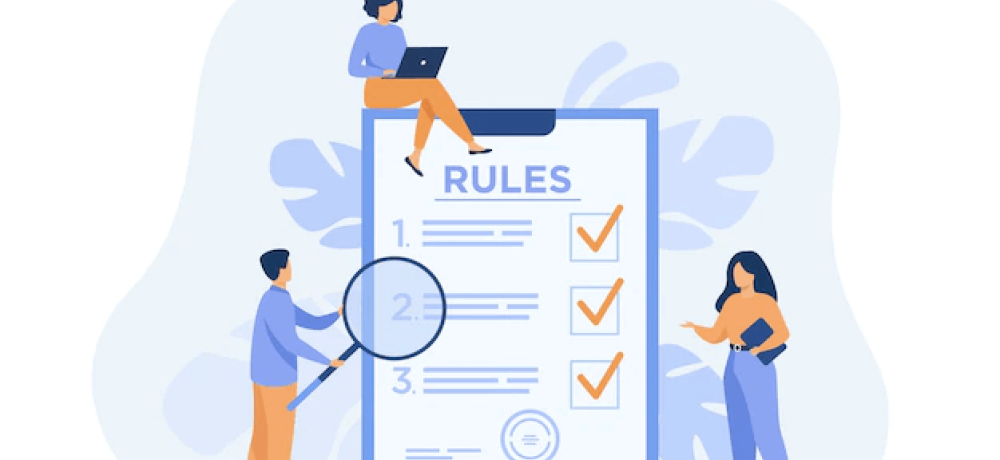
4 Behavioral Strategies for Organizational Compliance
What internal procedures and policies are in place in your organization to ensure internal conduct? Think of your written values, ethics policy, rules, and regulations. The different ways by which these are supported and help guide your employees make up your organizational compliance culture. A successful compliance culture creates an environment where everyone can say and do the right thing.
Driving organizational compliance
To drive organizational compliance, it helps to understand the behavioral conduct drivers that underlie the processes that should improve. What leads to non-compliant behavior? There are plenty of reasons for non-compliant behaviors – from awareness to complexity of the behavior. Non-compliance has been linked to biases like overoptimism, overconfidence, lack of transparency, social comparison, and self-evaluation bias.
Traditional organizational compliance courses might cause training fatigue which reduces retention. A good compliance intervention increases retention through interest. Insights from behavioral science can help increase engagement and habits to facilitate compliance. Think of a compliant behavior you’d like to promote within your organization. In this article you will find some behavioral strategies to help you get started.
4 Behavioral Strategies for Organizational Compliance
1. Enhance Transparency by Calibrating Feedback and Fluency
Transparency means employees are regularly updated with honest information and relies on having the right management systems to foster clear communication. Transparency is hindered by ambiguity, the tendency to prefer low uncertainty outcomes (risk aversion), lack of cognitive fluency, and lack of salience. Cognitive fluency refers to the perceived difficulty of a mental task and it guides our behavior in ambiguous situations. If the compliant behavior is unclear and seems harder we are less likely to follow through.
Ambiguity and Aversion
We can use the actions of others to show desirable behaviors and reduce ambiguity or risk aversion. We tend to see an action as more appropriate when others do it too (social proof). Especially in times of ambiguity, we rely on others to guide us towards the right behavior, as such when we are confronted with compliant behavior we are likely to follow it. Once ambiguity is dissolved into clear risks it increases autonomy and our feeling of control over our actions and their consequences (agency effect). Can you think of ways to use others’ choices to reassure individuals and help reduce risk aversion?
Feedback
Once you have identified the (compliant) behavior you’d like to promote, you can use feedback loops to guide the behavior. Providing real-time feedback helps us clarify our actions, such as whether we should continue or stop a behavior. Real-time feedback helps prevent impulsive actions. Here’s a checklist to help you master feedback loops:
- Offer feedback at key decision-making point
- Give context-sensitive feedback
- Give feedback that provokes an emotional reaction
- Provide clear consequences
- Ensure opportunity to rectify the behavior immediately

Default
An easy way to nudge behavior toward compliance is to use the desired conduct as default. When behavior is made default, we are more likely to follow it. For example, adding a company-approved policy default in software helps alleviate cognitive load and simplifies the desired behavior. Coded-in compliance was listed as one of the primary ways to combat fraud and corruption in 2022. We tend to accept the option that was pre-chosen for us, so we can easily reduce the chances of errors. In addition, default options act as a reference point to help us determine if other options are better or worse. Think about it, when a behavior is presented as default is it easier to comply or to go against it?
How can you implement default rules in your organization?
- Identify areas of application (e.g. policies)
- Consider if this can be turned into a default or opt-out option
- Turn “should I?” options into “Which one?” options
- Make the default salient, simple, and clear
2. Leverage Social Biases with Role Modeling
An organization’s culture is shaped by the competing social pressures and dynamics that employees must tend to. It is important to understand these social factors when creating a compliance culture. Role modeling is hindered by information asymmetry – which reduces motivation to change – and the tendency to assume that members from the out-group are more similar (out-group homogeneity). When role modeling is not targeted to a specific sub-section of an audience, the new behaviors are less likely to stick over time.
Norms
Social norms have been repeatedly found to dictate human behaviors. Norms are beliefs held about what is commonly done (descriptive) and what is socially acceptable (injunctive). In an organizational setting, we can use the actions of specific people to craft normative conduct (role modeling). To successfully craft normative conduct it is important to align what is commonly done with what is socially acceptable through means of communication and example behaviors. Employees’ behavior is significantly influenced by supervisors’ actions and communication. This is particularly true when it comes to safety and compliance, supervisors aren’t just safety rule enforcers but they ought to also be safety role models.
Change Champions
Change champions are team members who volunteer or are selected to help drive organizational change. It is important that change champions understand and believe in the upcoming change. Change champions are in charge of reducing resistance to compliance and communicating the ‘why’ and ‘how’ of policies to the wider organization.
After involving stakeholders to be included in co-creating solutions, encourage change champions to adopt the new culture and create behavioral shift (social influence and role modeling).
Narratives
Using narratives or storytelling can help create a powerful and human connection that facilitates compliance. Narratives make hard data more understandable and memorable (bizarreness effect), help overcome mental barriers, and make it easy for employees to understand aims and expectations (narrative bias). The emotional dimension in storytelling increases collaboration and persuasion. In terms of neuroscience, the same brain regions activate when being told about an action and when performing the same action. That is, hearing stories about compliance will be processed similarly to showing compliant behaviors.
3. Increase sanctionability by reducing overconfidence and overoptimism
Compliant behavior is partly based on (intrinsic or extrinsic) motivation. Understanding what motivates employees to (mis)behave helps design adequate sanctions and efficiently promote organizational compliance. Sanctionability is hindered by overconfidence, overoptimism, sunk-cost fallacy, and risk aversion.
Reward
One way to promote compliant behavior is to introduce variable rewards for good behavior. Rewards, financial or not, are more powerful when unpredictable. The advantage of rewarding behavior at an unpredictable interval is that the behavior continues even without a reward.
“At the end of the day, the most effective way to communicate that “doing the right thing” is a priority, is to reward it.” – Stephen M. Cutler
Before incorporating reward in compliance intervention, consider the simplicity of the compensation structure and the alignment with the company’s values. The easiest way to reward compliant behavior is to create metrics that are clear, concise, and achievable for employees. For example, the first step of a reward intervention could be to reward attendance to a Code of Conduct and Compliance training. Then, attention and retention could be measured and rewarded through a questionnaire. To align your compensation system and the compliance program, you should determine the most important compliance goal as a company.
As a strategy to implement rewards you can use Group Reinforcement:
- Identify the behavior you want to promote
- Reward a group of employees when at least one of them shows the desired behavior
- Provide the rewards for some instances of the behavior but not all

Reframe
In order to avoid deterring employees from trying through sanctions, it is also important to reframe past unsuccessful efforts into learning experiences. Reframing reduces sunk-cost, loss aversion bias and promotes new ideas. To create a habit of identifying efforts and reframing unsuccessful efforts you can conduct meetings at the end of a project aimed at reviewing what went right and what can be improved (post-mortem).
How can you conduct a post-mortem?
- Assign a moderator
- Keep the feedback constructive
- Work out the successes and problems together with the employee
- Reframe losses into positive learning experiences
- Develop actionable takeaways
4. Reduce social comparison and self-evaluation bias by holding employees accountable consistently
Accountable organizations foster an open and honest environment that allows employees to acknowledge mistakes free from the fear of blame. It is up to the organization to ensure that employees are held accountable through incident reporting and honest feedback. When employees are trusted to take initiative and responsibility for their work, they are empowered to think like leaders. Accountability is hindered by social comparison and self-evaluation bias.
Consistency
Studies have suggested that intermittent accountability undermines bias suppression (Solomon et al., 2021). Thus, it is important to observe and evaluate employees consistently. One way to ensure consistent evaluation is to start a supervision cycle that enables the employees to learn and develop by processing their experiences. During the supervision cycle you should follow these guidelines:
- Gain a full understanding of the situation. You can ask questions like “What did you expect to happen?”.
- Emphasize what feelings were elicited in the specific situation. Consider asking “What feelings were you left with?”
- Address uncertainty.
- Translate the conversation into planning and action by asking “What are your aims in the next phase of work?”
Goal priming
To increase accountability you can ensure that your employees feel like their actions contribute toward the final goal. You can remind employees of the bigger goal when they complete smaller tasks (goal priming). Goal priming helps with motivation and taking overall process responsibility. Subtle, well-timed cues that surface our long-term goals improve the immediate decisions required to get us to reach our goal. Think about how you can position smaller goal completion within bigger goals in your company.
Recap
There are different ways to improve your organizational compliance with culture. This article outlined 4 areas to focus on when designing compliance interventions. Firstly, improving transparency will reduce ambiguity and aversion whilst lowering the cognitive burden of compliance and improving feedback culture. Secondly, creating norms of compliance through change champions and narratives helps leverage social biases that hinder compliance.
Thirdly, playing with rewards and framing helps increase sanctionability to reduce overconfidence and overoptimism that drive non-compliant behaviors. Lastly, consistently holding employees accountable for their actions and reminding them of the bigger goal helps empower employees to take initiative, responsibility, and comply.
We hope this article was useful to you and if you’re looking for a behavioral business partner who can drive change in your organization, we’d love to schedule a call or coffee.
If you want to learn more about behavioral insights, read our blog or watch 100+ videos on our YouTube channel!
About Neurofied
Neurofied is a behavioral science company specialized in training, consulting, and change management. We help organizations drive evidence-based and human-centric change with insights and interventions from behavioral psychology and neuroscience. Consider us your behavioral business partner who helps you build behavioral change capabilities internally.
Since 2018, we have trained thousands of professionals and worked with over 100 management, HR, growth, and innovation teams of organizations such as Johnson & Johnson, KPMG, Deloitte, Novo Nordisk, ABN AMRO, and the Dutch government. We are also frequent speakers at universities and conferences.
Our mission is to democratize the value of behavioral science for teams and organizations. If you see any opportunities to collaborate, please contact us here.
